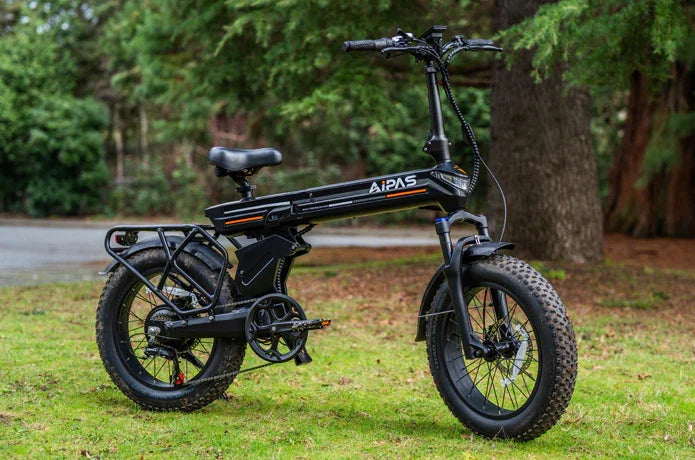Proper storage and transportation ensure that your electric bike remains in top condition, lasts longer, and avoids unnecessary wear, tear, or damage. Here are some top methods for storing and transporting your e-bike properly.

Storing Your Electric Bike Properly
1. Storage Location
-
Indoors or Outdoors:
Indoor storage is ideal as it protects the e-bike from rain, snow, and extreme temperatures. However, if indoor space is limited, outdoor storage can work with the right precautions.- Choose a dry, well-ventilated indoor area to prevent moisture from building up, which can harm electrical components.
- If you must store your bike outdoors, invest in a high-quality, weatherproof cover. Look for covers made specifically for bicycles to ensure complete protection from moisture.
- Avoid placing your e-bike in direct sunlight, rain, or other harsh weather.
- Consider using bike racks or wall mounts, which save space and keep your e-bike safe and organized.
-
Temperature and Humidity:
E-bike batteries are sensitive to extreme temperatures, so store your bike in a cool, dry place. Avoid excessive moisture, extreme heat, or cold. If you live in a cold climate, consider storing it indoors during winter. -
Security:
Secure storage is essential, especially for outdoor storage. Use a high-quality lock and choose a secure area, like a locked garage or a dedicated bike storage space.
2. Preparing Your E-Bike for Storage
-
Cleanliness:
Clean your e-bike before storing it. Remove dirt, mud, and grime from the frame, wheels, and drivetrain to prevent corrosion. -
Battery Care:
Aipas electric bikes come with a removable battery. Store it separately in a cool, dry place. If you won’t be riding for an extended period, remove the battery from the e-bike to prevent it from discharging. Recharge the battery every two months or so to maintain its performance, and try to store it at 40-80% capacity. -
Lubrication:
Lubricate the chain and any other moving parts as specified in the bike’s manual. -
Check for Loose Parts:
Tighten any loose screws and check for broken components to prevent issues later. -
Tire Pressure and Suspension:
Inflate tires according to the manufacturer’s recommendations to prevent flat spots. Reset the suspension settings to neutral to relieve stress on components.
Transporting Your E-Bike
1. Racks
When transporting your e-bike by car or RV, choose the right rack:
-
Roof Racks:
Ideal if you're comfortable lifting your e-bike onto your car’s roof. These racks leave cargo space open and typically fit most e-bike designs. -
Hitch Racks:
A popular choice due to their safety and ease of use. Hitch racks are quick to secure and keep your e-bike accessible. -
Trunk Racks:
These are more affordable and versatile but may scratch your car's paint. They typically don’t obstruct visibility.
2. Tips for Transporting Your E-Bike
-
Remove the Battery:
If possible, remove the battery to make the bike lighter and safer during transit. -
Remove the Front Wheel:
Removing the front wheel can make loading easier and help the bike fit better. -
Inside the Vehicle:
Lay the bike down with the chain side facing up to protect the controls and cables. A blanket can prevent scratches. -
Cover When Towing:
If towing an e-bike at the back of your car, use a cover to protect it from debris and weather.





Leave a comment
All comments are moderated before being published.
This site is protected by hCaptcha and the hCaptcha Privacy Policy and Terms of Service apply.